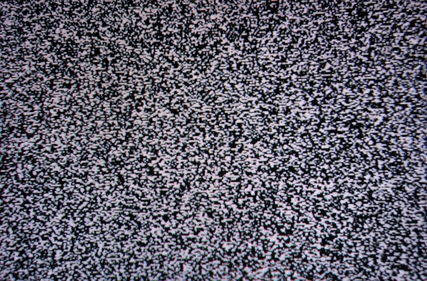GUYSIDE: Keep a weather eye out for dubious claims.

Take a hint from Pepe, and be skeptical of medical claims — the more grandiose the more skeptical!
I was watching my local newscast recently and heard about an innovative new treatment for “winter blues”, or Seasonal Affective Disorder. As someone who strongly dislikes 4 pm sunsets, I was interested enough to keep watching.
The treatment is a device called the Alpha LED Light Spa. This device, which resembles a tanning bed, offers a variety of programs that combine light, heat, and oxygen to treat a variety of symptoms. The owner of this particular device told the reporter that it was an effective treatment for more than 1000 disorders — and that REALLY got me interested. Here’s the list:
“Energizing Whole Body, Mind and Spirit, Cold/Flu, Sleep/Insomnia Improvements, Depression, Seasonal Affective Disorder, Mind Clarity, Meditation, Pain Relief, Lymphatic drainage, Wound Healing , Immune Boost, Stress Relief, Detoxification, Weight Loss, Cellulite Treatments, Skin Care – Acne Treatments, Skin Care – Anti-Aging, Addictions, Balances hormones, Migraine relief, Soothes nervous system, Lowers cholesterol, Infertility, Psoriasis, Anxiety, Inflammation, & more.”
Unfortunately, there’s no links to evidence on the site. And I haven’t been able to discover any in my time looking around. There is little doubt that SAD, disruptions in sleep due to circadian rhythms, and depression can be treated effectively by light therapy. But on the face of things, it seems unlikely that this device would be able to successfully treat more than 1000 problems.
Claims like this need to be taken skeptically, not least because at the Ottawa spa offering these treatments, it’s $75 per session.
And there’s no shortage of claims that need to be given the side-eye. Also this week, an article in the British Medical Journal looked at medical recommendations made on the Dr. Oz show and The Doctors. In the case of Dr. Oz, fewer than half of the medical recommendations provided had any sort of supporting evidence backing them up; 1 in 6 were actually contradicted by medical evidence.
It’s easy to make a medical claim, and ones that fit into what we want to hear (eat this and your belly will magically shrink!) are much more readily consumed by us humans than ones that are a little more work (eat less, move more, and stop with the Big Gulps).
You owe it to yourself to ensure the actions you take to preserve and improve your health are ones that have a basis in fact.
For those who’ve just finished celebrating Chanukah, and for those who are anticipating a visit from Santa, Merry Christmas and Happy Holidays!
(Photo is CC-licenced from Flickr user Yiie)
Read MoreGuyside: Breaking good
 I’m a pretty lucky person. While my life isn’t perfect, I have many advantages, and I’m thankful for them. It’s easy to forget about that when you get focused on some problem or other.
I’m a pretty lucky person. While my life isn’t perfect, I have many advantages, and I’m thankful for them. It’s easy to forget about that when you get focused on some problem or other.
But sometimes good enough shouldn’t be, you know?
Think about Walter White, a/k/a “Heisenberg” of Breaking Bad. He was a guy who had a “good enough” life — wife, son, baby on the way, a steady job that is respected, if not well-paying… and then a diagnosis of terminal lung cancer shattered everything in his life and forced him down a radically different path.
I’d be perfectly happy if not one person ever got diagnosed with lung cancer. And, for that matter, if people stopped making and using crystal meth. But I think that we don’t have to “break bad” — why not “break good?”
I’ve been trying to change some of my routines recently. For example, since I work from home I do most of the dinner preparation for the household. It’s the sort of thing that can make a break from staring at the computer or talking on the phone. And, like most people, I have a repertoire of dishes that I know well enough to essentially make without a great deal of thought.
So to break that up, I’ve started to search out new recipes, new ideas. It’s fun to try (especially when they work out well), and it breaks me out of the cooking rut and both me and my partner out of the taste-rut. Example: it being summer, coleslaw is a natural side dish for things we cook on the BBQ. I was used to buying bagged coleslaw from the store, then dressing it with a commercial dressing. Somehow I realized that hey, coleslaw’s just a few shredded veggies. So I started making my own. Then I tried some dressing recipes. WAY better than before. (FYI: I’ve become quite fond of this dressing recipe, with a few variations. Try it.)
I’ve changed other things recently too. I love beer. But having that end-of-day beer or the beer with supper, or the finished-the-yard-work beer can become a little … routine. So for a few weeks now, I’ve haven’t been bringing beer into the house. Now, when I have beer — like I did yesterday during an end-of-day business meeting, or like I did when I was visiting family recently — it’s DELICIOUS. At some point, I’ll likely restock the fridge, whenever I get the desire to do so.
There are all sorts of little routines that we establish in our lives. Many of them are there for very good reasons. We get up and shave and shower because we like being clean. We brush our teeth because we want our breath fresh and we don’t like cavities. But changing habits can be good for you. It stimulates your brain. It can make you think about the reason behind the habit. And that’s never bad.
Look at the routines of your day — the way you interact with people in your life, what you eat, drink, how and when you exercise, your activities, your leisure, your work. Pick one to play with, to try to change.
A lot of meditation practices focus on mindfulness — on simply being aware of your circumstances. If you feel good, note it. If your knee is sore, note that. If you want another cup of coffee, be aware of the desire. Assessing the little routines, experimenting by breaking one of them for good, and seeing if it improves your daily life — that’s part of mindfulness too. And failing is part of changing habits too. If you don’t like a change, or you can’t stop biting your nails, or whatever — just note that. Don’t beat yourself up over it.
Try it, just for fun.
Read MoreDeath be not complacent
 Pete Seeger died last week. He was 94. As a lover of folk music, it’s hard to imagine someone who more powerfully embodied that genre’s ideals. A man of principle who believed the best thing to do with a song was share it, a man who used his music like a well from which to draw joy.
Pete Seeger died last week. He was 94. As a lover of folk music, it’s hard to imagine someone who more powerfully embodied that genre’s ideals. A man of principle who believed the best thing to do with a song was share it, a man who used his music like a well from which to draw joy.
What struck me as I read the many tributes to him in emails, tweets, and Facebook posts was that death is different as you age. I lost an older brother at 13. That was a shattering experience. In my 20s, I can only remember going to one funeral – a young man who died tragically in a roller-blading accident. It was a poignant service.
By now, I’ve lost tons of uncles and aunts from my long-lived clan; too many. The most recent was just last week, my aunt Stella. A few cousins too, and of course, my dad. And outside of the family, I’ve lost friends, primarily to cancer, that blind killer of the old and young alike.
I have had more encounters with death than I’d prefer. But what once was momentous has become an event that is sad, inevitable, and far more anticipated than before. So what should we men of a certain age learn from death?
Don’t sit on things. When I was diagnosed with bladder cancer, it was caught early because when I saw blood in my urine, I DID something about it. Ignoring symptoms is rarely a good idea.
Acknowledge your own mortality. Yes, you feel good now. It’s easy to tell yourself — seriously — that you’re bulletproof. But be realistic. Bodies change, fitness changes; if you are an average guy, you’re likely not as strong as you were 20 years ago, as fast. Accept it (without giving in and giving up). Set fitness and activity goals that aren’t going to leave you groaning for days afterward or in the ER.
Do stuff now. When I turned 40 and got cancer, it woke me up and I made some changes that I’d idly thought and talked about for years without taking action. It’s always time to do that. Investment guru John Templeton once said “The best time to invest is when you have money. This is because history suggests it is not timing the markets that matters, it is time.” You HAVE time that you can invest in anything you want to do. Right now. Do something.
Think a little bit holistically. No, I’m not suggesting buying a juicer or getting your chakras aligned. But when I was younger, I didn’t make the connection between my body and my mind. Using tools like yoga, meditation, therapy, etc. doesn’t only improve your psychological health. It can make you exercise better and, in my experience, make you enjoy your exercise routine more by deepening your concentration.
Death is inevitable. It’s going to come to all of us at some point, and we will be reminded of that by the loss of friends and family from time to time. But don’t take that inevitability as impending doom; take it as a reminder that with a finite amount of time allocated, it’s up to us to make the most of it.
(photo Creative Commons licenced by Flickr user Leiris202)
Read MoreNewsflash: Yoga and hot flashes
When it comes to alternative strategies for managing hot flashes, where do you turn? I’ve been writing about alternatives for five years now and the only thing I am fairly certain of is that what works for one woman doesn’t necessarily work for the next. Consider the management of menopausal symptoms similar to the management of any condition: the best treatment is always individualized.
Still, mind-body practices tend to rise to fore and evidence continues to accumulate supporting their value and usefulness. This is especially true of meditation, and of yoga.
The latest news on yoga comes from the online edition of Menopause journal and researchers are saying that integral yoga practice may help to reduce hot flash frequency among some women.
Integral yoga integrates the various branches of yoga and focuses on a whole body approach with the goal of transforming the entire being. Experts say that it is especially well suited to hot flashes because it emphasizes stress reduction and decreasing the likelihood of becoming overheated.
To evaluate its usefulness in a more scientific setting, researchers asked a small group of women in perimenopause who reported at least four hot flashes a day to participate in 10 weekly, 90-minutes integral yoga classes comprising breathing, centering medication, physical postures and deep relaxation, or health and wellness classes on different topics relevant to menopause and midlife women’s health or no interventions at all. All had the option to join classes at any time, and were required to fill out diaries about their flashes.
The findings? The researchers say that even after controlling for a potential placebo effect, both the yoga and health and wellness groups tended to follow a similar pattern and a similar significant decline in hot flash frequency. Women in these groups reported an estimated 66% (yoga) and 63% (health/wellness) decrease in the frequency of their hot flashes. And, while the effectiveness of yoga to lower hot flash frequency was not considerably different than that of the health/wellness education classes, the inclusion of the two behavioral interventions may perhaps capture naysayers’ attention; most studies only include on behavioral intervention and having two helps to temper bias.
We need more studies like this one to tease out the benefits of behavioral interventions. The good news is that the information is there for those who look deeply enough.
Read MoreThe Kindness of Strangers
 “Whoever you are, I have always depended on the kindness of strangers.” Tennessee Williams, A Streetcar Named Desire, 1947
“Whoever you are, I have always depended on the kindness of strangers.” Tennessee Williams, A Streetcar Named Desire, 1947
This quote is one of the most widely used and widely recognized quotes in the world. I imagine that one of the reasons for its recognition (besides the brilliance of Williams’ writing) is that kindness, particularly random kindness, is such an unexpected gift. And when it occurs, it affects individuals on a cellular level. Yet, so many of us are caught up in our daily lives, our challenges, our joys and our sorrows, that we often need to be reminded that an extended hand can alter another person’s day. Most importantly, kindness does not need be tangible; bestowing a simple smile, a wave or wishing another well is one of the most valuable acts of self that can be shared.
It strikes me that the more crowded our lives become, the less likely we are to recognize the degree to which we are self involved and how it may affect the people we encounter very day. No more is this evident than on social networks, where, the endless ‘me me me’ updates have simply become white noise. Ironically, that white noise may actually be detrimental to our health, but not for the most obvious reasons.
Help others. Help yourself.
Research has shown that there is a link between positive emotions and physical health. And while experts have not yet fully teased out the ‘how’ and ‘why,’ they have been able to demonstrate that positive social connections beget positive emotions, which beget increases in vagal tone, a proxy for physical health.
Vagal tone reflects how well or how poorly the vagus nerve is functioning. And importantly, the vagus nerve is directly linked to nerves that control and coordinate where our eyes focus, how we express emotions on our faces and how our ears respond and tune to human voice. While vagal tone is mostly stable, there is evidence that sustained positive emotions and social perceptions may actually promote its functioning. This is important because when vagal tone is optimized, it boosts activity in the nervous system that helps slow heart rate, and calms and relaxes. Recent study findings also suggest that people can actually steer themselves toward greater health by harnessing, if you will, the power of vagal tone, simply by learning to generate positive emotions through loving-kindness meditation.
Loving-kindness meditation is a type of meditation practice that focuses on developing positive intention and kindness and warmth toward others. In women, it has been shown to significantly lengthen telomeres, the DNA structures at the ends of chromosomes that scientists consider markers for aging. Over a lifetime, telomeres shorten and this shortening is often accelerated by cellular inflammation and chronic psychological stress. While meditation practice has generally been associated with positive health benefits, the benefits of this particular form of meditation that focuses on the well-being of others appears to be especially strong in women, perhaps because they are inherently more empathetic or tend to focus on caregiving.
Want to break through the white noise? Today, I challenge you to practice one act of kindness toward a stranger or someone who you don’t know very well. Tomorrow, I challenge you to do the same. Not only will your gift of kindness benefit the recipient, but you may find that it changes your physical and mental wellbeing in ways that are not immediately tangible.
Read More







